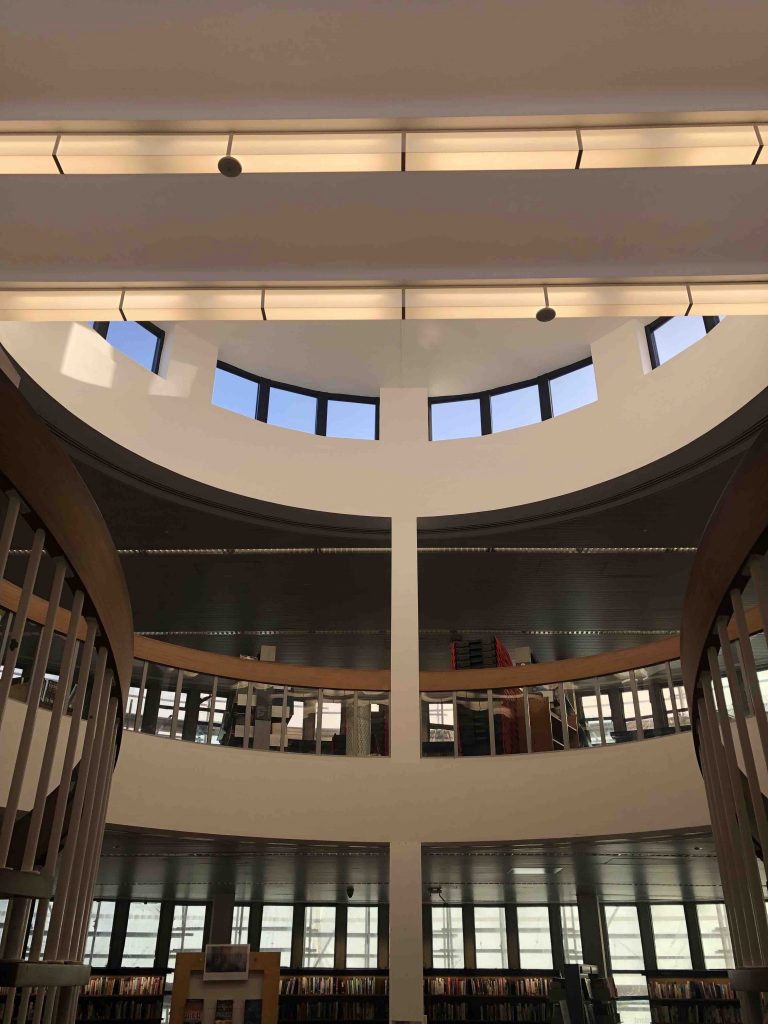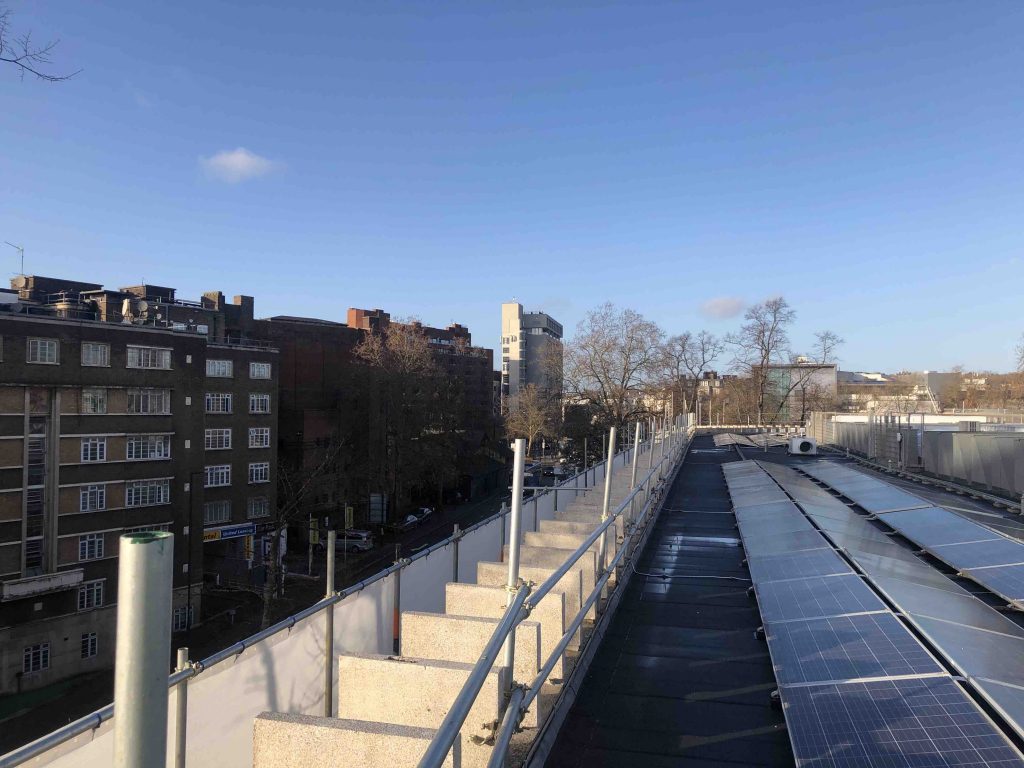Eco 2023: Swiss Cottage Library, the mission to retrofit an architectural gem
Sir Basil Spence's building is known for its landmark 'fins' – but it was losing heat
Friday, 6th January 2023 — By Dan Carrier
![Eco 2023: Swiss Cottage Library, the mission to retrofit an architectural gem Swiss Cottage Library was designed to look like an open book [George Rex] Image 2022-09-23 at 3.49.04 PM (5)](/media/2022/09/WhatsApp-Image-2022-09-23-at-3.49.04-PM-5.jpeg)
Swiss Cottage Library was designed to look like an open book [George Rex]
FROM making fake tanks to fool Nazi Germany before D-Day, building the Blitz-destroyed Coventry Cathedral, designing red brick universities during the post-war higher education revolution and a nuclear power station, architect Sir Basil Spence is a giant of 20th-century British design.
And Camden is the fortunate custodian of one of his best-known buildings – the Swiss Cottage Library in Avenue Road.
Built between 1962 and 1964, the library is home to more than 60,000 books.
In November 1964, the late Queen Elizabeth II cut a ribbon to declare the library officially open – and Spence’s celebrated Modernism, inspired by a trip to visit Scandinavian libraries, has been a haven for bibliophiles of all ages for more than 50 years.
But while the design is still well loved – some 238, seven-metre-long “fins” that make up the facade are an instantly recognisable landmark – what goes on behind the concrete has not stood the test of time so well.
And with the Town Hall seeking to hit carbon neutral as soon as possible, managing listed buildings in a way that both respects their heritage as well makes them fit for a post-carbon world presents a challenge.
The library was the first of at least 70 Town Hall-owned buildings that are earmarked for fundamental refits to cut their impact on the environment.

Inside the library
With the library project almost completed – the scaffolding shrouding the building is due to come down in March, once the fins have been repaired – hundreds of yards-worth of shelving will have books restored to their rightful place.
Mechanical engineer Gary Watson has been working on the project to cut the costs of running the library and lessen its impact on the environment.
He told the New Journal it was a challenge due to the building’s listed status and the range of works needed to make good, which included insulation in walls and the roof, lighting, windows and fitting new carbon-free heating systems.
From cutting at least 50 per cent of all heat loss and using carbon-neutral energy, Spence’s 1960s masterpiece is ready for another 50 years.
Mr Watson said: “Generally the building is in quite good condition, but its construction was very basic and there was no insulation at all. One of my roles is to look at life expectancy. In 2018, we did a whole condition survey. Buildings do have a life expectancy and they reach the end.
“The energy use here was very poor and there was a lot of water coming in. It meant the library was put at the top of the list.”

Up on the roof, to the left you can see the ‘fins’
Using a thermal modelling system, the engineers calculated where heat was being lost.
Coupled with measuring energy use, they could build up a comprehensive picture of how the building worked – and target how they could make it greener. Some of Spence’s eye-catching designs stored up trouble for the future.
The 238 fins around the building’s facade had cracked over time and allowed water into the building, while bookshelves hid design issues that needed to be put right.
“The library had built-in book cases,” Mr Watson said. “Behind them were empty cavities and then a thin strip of concrete panelling.”
The bookcases did not offer a protective haven for the tomes they held. As the panels and fins weathered, minute cracks allowed in moisture – leading to mould.
Mr Watson said: “The bookshelves are listed which meant restoring them or building ones that were like for like.”
As well as taking down bookcases to discover what lay behind them, the work had to be done with the library still open.
Town Hall environment chief Labour councillor Adam Harrison explained: “This meant moving thousands of books – more than 60,000 – in a way that librarians could sift through them when a reader requested a title. They were put into crates, carefully numbered and recorded.”

The library’s old bookcases

Camden’s senior building surveyor Gary Watson, left, with Chris Wollen, chair of contractors Ergo Group and Cllr Adam Harrison at the construction site.
Behind the bookcases, new high-spec insulation was fitted into the voids. As well as increasing the insulation of what had been walls made of one-and-a-half-inch thick concrete panelling, replacing hundreds of single-glazed windows was crucial.
Mr Watson said: “While the windows had little stand-out features in terms of heritage value, they have been replaced like for like.”
The project was backed by a £1.4million grant from a fund that is used to decarbonise public buildings and Camden spent a further £3.2m.
Cllr Harrison added: “A decarbonisation scheme is three to four times more expensive than simply doing like-for-like replacements. But it is vital work. We will save at least £31,000 a year in costs, though prices have risen since we did the first survey, so the savings could be even more considerable, and around 140 tons of CO2 emissions per year.”